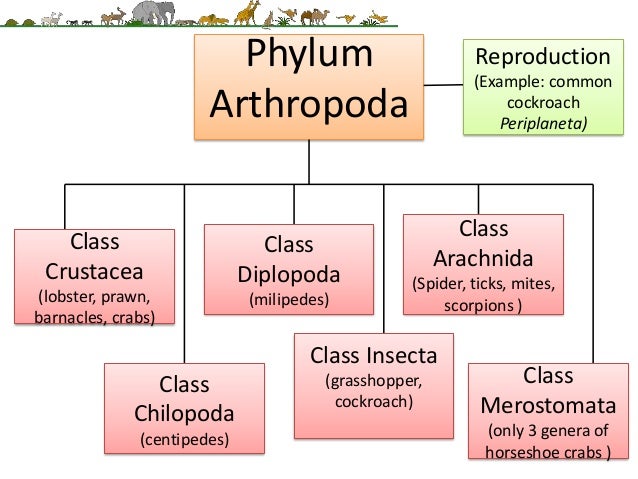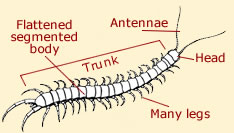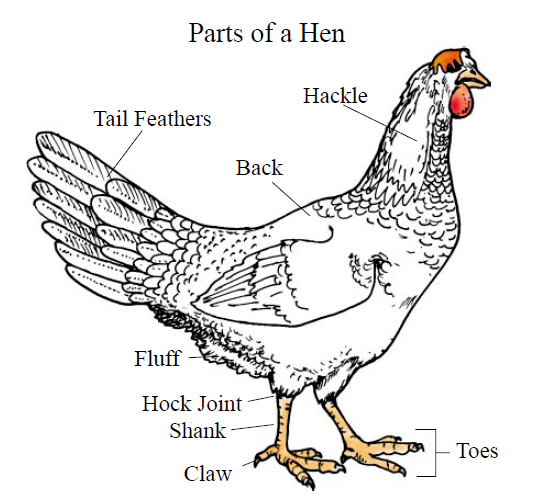CLASSIFICATION
OF LIVING THINGS KINGDOM ANIMALIA II
The kingdom Animalia is large and compose of
a wide variety animals, which vary greatly in structure,morphology and their
body function.
THE
DISTINGUISHING CHARACTERS
i. Animals are multicellular and each cell is bound by a plasma membrane.
ii. Animals bodies are differentiated into tissues
iii. Animals are heterotrophic.
iv. Animals are capable of locomotion.
v. Animals have a nervous system
Animals
can be placed into two major groups on the basis of presence or absence of a
Notochord. at least at one stage of development
A Notochord is a supporting rod like structure running longitudinally along the
dorsal side of the animal, which may persist in life and replaced by a
backbone.
- Chordates are animals with a notochord
- Non-chordates are animals which lack a notochord.
Chordates
have only two phylum known as chordata and non-chordata comprises of many
distinct phyla.
s,suckers and cilia and shape of the body
1.
PHYLUM PLATYHELMINTHES
They
are also called flat worms
They
phylum is divided into three classes on the basis of the mode of life,presence, absence of hook
1.
Trematoda
2. Cestoda
3. Tubellaria
The
distinguishing character is that their bodies are dorso- vertically flattened
i. TREMATODA (FLUKES)
- They are all parasitic
- Some live in the blood stream, ducts or gills or skin of fish.
- Members of this class are flat
- They have suckers at the anterior end

NB:Parasites
are organisms which depand on other organisms for food and other basic need
ii. CESTODA (tape worm)
o They are flat
o Their bodies are segmented
o They are all
parasitic
o Certain species have suckers and hooks (e.g. pork tapeworm)
 |
| Fig. tape worm(Taenia solium) |
i The adult tape worm lives in humans where it attaches itself to the intestinal wall with hooks and suckers it absorb they host’s partly digested food through its skin.
ii The tapeworm can cause symptoms of malnutrition or anaemia, also
pain due to irritation on the intestinal wall.
iii Infestation can be avoided by
having all meat inspected for the presence of bladderworms and always be sure
to cook thoroughly.
iv. Proper sanitary condition will ensure that cattle or pigs
do not ingest tapeworm egg with human faeces.
iii. TUBELLARIA
- They are flat
- They have
cilia on the vental side of the body o Some of them are parasitic
- Some of
them are free living (e.g. planaria)
| Fig. Planaria |
2. PHYLUM NEMATODA(Ascheliminthes) (round worms)
Nematodes
are usually found in populations of very large numbers. (usually in soil-
dwellings). Nematodes are circular in cross section and have very few cell.Examples Ascaris,Filaria,Hookworm)
- Unsegmented cylindrical body with pointed ends.
- Cuticle of protein
- No cilia or flagella
- Some are free living and some are parasitic.
Ascarisis
is infection of the small intestine with the giant roundworm. Ascaris
lumbricodes whose eggs pass out in the feaces and transmitted by eating food
contamin with these eggs. Ascarisis rarely causes symptoms and often go
untreated.
| Fig.Ascaris |
Threadworms(Enterobius vermicularis) are very small roundworms that infest the intestine often in huge number. The
female emerges the anus to lay eggs on the skin causing irritation itching, and
these eggs are easily transfered to the transmission is by direct contact
between contamination hands and mouth or by eating contaminated food.
Filatiasis
including Elephantiasis is common in mosquito infested regions. Elephantiasis
is caused by filarial worm.
Wuchereria
bancrofti which infests the lymph vessels and skin tissues. The microscopic
young worms are transmitted by mosquitoes. The worms caused inflammation of the
effected parts, usually legs.
| Fig Filaria
Anclyostomiasis
is infestation by the Hookworms, ancylostoma duodenale which are small worms
entering through the skin travel to the lungs then to the intestine where they
attackto the wall with a ring of hooks. The egg pass out in faeces. Hookworms
cause diarrhoe stomach pain and anaemia.
|
NB:
Most roundworm infestations can be treated with drugs which kill the worms.
They can be controlled by improved sanitation.
3. PHYLUM ANNELIDA
1.
This phylum includes all “true worms”
The
most common species is the earth worm(Lumbricus terrestris); marine worms example are clam worms, sea
mouse, and tubeworm; fresh water example are leech.
| Fig leech |
General
and distinctive features
i. Metameric segmentation(Internal organs and body wall are segmented).
ii. A thin moist non-chitinous
cuticle.
iii. The presence of chaetae(bristles)
EARTHWORM
The
earthworm has a long cylindrical body pointed at one end. The anterior end has
a mouth and the posterior end has anus. The earth worms underground.
However,
it anterior part is very sensitive to light which it always moves away from.
- The soft moist skin is protected by cuticle and layer of mucus.
- Each segment has 4 pairs of chactae (excludin
- Clitellum is a saddle-like swelling part of the body which contains eggs

IMPORTANCE
OF EARTHWORMS IN SOIL FERTILITY
i They burrowing breaks up the soil and allows plant roots to to grow more
easily.
ii Their burrowing aerate the soil, providing essential
iii. Their burrows
help rainwater to drain through the soil more easily and prevent water logging.
iv. They drag leaves and other plants part into the soil when they feed which
adds humus content of the soil.
4. PHYLUM ARTHROPODA
The
most common species is the earth worm; marine worms example are clam worms, sea
mouse, and tubeworm; fresh water example are leech.
General
and distinctive features
Internal
organs and body wall are segmented. chitinous cuticle. (bristles)
has
a long cylindrical body pointed at one end. The anterior end has a mouth and
the posterior end has anus. The earth worms has no eyes and spends its life in
burrows
However,
it anterior part is very sensitive to light which it always moves away from.
•
The soft moist skin is protected by cuticle and layer of mucus. • Each segment
has 4 pairs of chactae (excluding 1st and 2nd segment)
is
the part of the body which contains eggs
IMPORTANCE
OF EARTHWORMS IN SOIL FERTILITY
i.They
burrowing breaks up the soil and allows plant roots to to grow more easily.
ii.Their burrowing aerate the soil, providing essential oxygen for respiration of
plant roots. iii.Their burrows help rainwater to drain through the soil more easily
and prevent water
iv.They
drag leaves and other plants part into the soil when they feed which adds
humus
PHYLUM
ARTHROPODA
Phylum
arthropoda consists of grasshopper, spider and crab.
The
distinguishing characteristics of the phylum
• Have jointed appendages
• An exoskeleton made of chitin.
It
has 5 classes which are
 |
| Fig.Classes of phylum arthropoda |
1.
Insecta (grasshopper)
2.
Crustacea (Crab)
3.
Arachnida (spider)
4.
Diplopoda (millipede)
5.
Chilopoda (centipede)
1.
CLASS INSECTA



Distinguishing
characteristics of insects.
1.
Body is divided into three regions; head, thorax and abdomen
2. Have one pair
of antennae
3. Have three pairs of joint legs
4. Most adults forms have wings
Members
of this class differ in a number of ways.
- Some have wings (grasshopper) others do not (termite workers)
- Some are large (beetle) others are small (mosquitoes)
- Some are free living in water as water scorpion, in land are cockroach, housefly, grasshopper)
- Some are parasites
- If wings are present may be one pair (housefly) or two pairs (grasshoppers). Insects with 2 pairs of wings may have a hard outer pair and soft membranous inner pair ( e.g in beetles)
- Insects that feed on pollen and nectar are of economic importance as they pollinate plants
- Soil dwelling insects feed on dead plants material and are useful as they speed up the process of decay.
- Other insects are dangerous to humans, some carry diseasese.g mosquitoes (transmits malaria, yellow fever and certain forms of fillariasis) and tsetse fly (transmits sleeping sickness)
- Some effects termed as pests feed on plant tissues and stored crops.
- Termites feed on living plants and dead woods, they destroy timber and attack furniture, books, boxes and other materials made from wood. (e.g cockroach, termite, beetle)
- Housefly also transmit diseases by collecting germs from the faeces and rotting material and depositing them on uncovered food.
2.
CLASS ARACHNIDA
Arachnids
includes spiders, scorpions, ticks and mites

Distinguishing
characteristics.
•
Four pairs of jointed legs
•
Head and thorax fuse to form a cephalothorax and abdomen.
•
One pair of chelicera (most anterior pair of appendages)
•
The arachnids vary in body form and habitat.
•In
some arachnids as scorpions the abdomen narrows postriorly. Some are aquatic
while others are terrestrial.
Economic
importance of spiders is that they feed on pests insects. However some are
poisonous.
3. CLASS CRUSTACEA


Distinguishing
characteristics
1.
Two pairs of antennae
2. Bi – forked appendages
- Members of class crustacea vary in habit and body form some are marine (crab, Prawns, Lobsters) others are fresh water or in most places on land.
- Some have a hard body covering at the anterior end. Aquatic crustaceans may have telson at the posterior end which helps in swimming movement. Prawns, shrimps, crabs and lobsters are important to humans as food.
These
are two similar classes of phylum arthropoda
Have
long body consisting of many segments.
4. CHILOPODA :
 |
| Fig Centipede |
- The body of centipedes is flattened dorsoventrally.
- They have one pair of legs on each segment
- Are carnivorous feeders
5.
DIPLOPODA:
It consist of millipedes
- The body is rounded
- Have two pairs of legs on each segment
- Are herbivores feeders. o Millipedes can be dangerous / detrimental in that they feed on roots and other parts of the growing crops
NB:
- Both centipedes and millipedes are soil dwelling animals
5. PHYLUM CHORDATA
The
distinguishing characteristic
•
They have a notocord in the embryonic stage. In most of chordates it is
replaced by a vertebral column.
•
The nerve cord is hollow and placed dorsally to the gut.
•
They have gill slits at least during the embryonic stages.
•
They have a tail which is behind the anus.
The
presence or absence of gill, fins, mammary glands, seabacious glands, dry scaly
skin, moist skin, tadpoles, wings, feathers, hard egg shells and beak is used
in the classification of this group.
Classes
of phylum chordata
1.
Class chondrichthyes
2. Class Osteichthyes
3.
Class Amphibia
4. Class Reptilia
5. Class aves
6. Class mamalia
1.
CLASS CHONDRICHTHYES
This class include cartilaginous fish
include sharks, skate and rays. Almost all are marine some are dorsoventally
flattened and others are spindle shaped.
| Figure.Skate |
Distinguishing
characteristics
1.
The skeleton is made of cartilage
2. The body is covered with placoid scales
3.
The caudal fin (tail) has two lobes that differ is size
4. Each pair of gills
is in separate compartment
5. The gills slits are visible (there is no
operculum /gill cover)
6. The mouth and two nostrils are centrally placed.
7.
The body temperature varies with that of the environment i.e they are
ectotherms/poikilotherms/cold blooded
Some are important source of food to humans.
Disadvantage
1.
They see us as a source of food
2. CLASS OISTEICHTHYES
1.
It consist of bony fish
| Add caption |
Distinguishing
characteristics
1.
Skeleton is made up of bones
2.
Their Body is covered with overlapping bony scales
3.
Mouth is terminally placed and nostrils found dorsal surface.
4.
Gills are found in a common chamber and are covered by an operculum
5.
Tail fin has lobes of some size.
6.
Most have an air sac (swim blader)which aids buoyancy
7.
Body temparature varies with environment. (they are ectothermic/poor
kilothermic.
NB: Member of these class vary in form,
size and habitat. The majority have scales while some do not. Are found both in
sea water and fish water. Most have gills but a small group have lungs.
Advantage:
-
1.
Important source of food to humans
2. Important source of employment (fishing)
3. Fish oil are important medicinally 4. Fish meal is used as fertilizer
3. CLASS AMPHIBIA
It includes toad, frog, salamander and
limbless amphibians,
They have to spend part of their lives in water. Most
amphibians lay eggs in water and young stages live in water.Only adults can
live on land.

Distinguishing
characteristics
1.
Skin is always moist and without scales.
2. Life cycle involves larval form
called Tadpole
3. External and internal gills are present in larval stages.
4.
Have a heart with three chambers (two-atria and one ventricle).
5. Gaseous
exchange is by gills in tadpoles and by lungs/ skin and mouth lining by adults.
6. Eggs are covered with a jelly like substance and laid in water.
7. Body
temperature varies with that of environment (i.e. they are
ectotherms/pokilothermic).
NB:
-
•
Amphibian vary greatly in size body form and habitat. Some are large (toads)
others are small (tree frog).
•
Most have limbs, few do not and look like snake or worms
•
Some amphibians have webbed toes, another do not
•
Amphibians are never found in salty water.
Advantage:
Some feed on insets and pests which would otherwise destroy crops.
4. CLASS REPTILIA
Reptilia
are thought to have evolved from Amphibians. Four main groups of reptiles are
snakes, lizards, turtles and crocodiles.
Distinguishing
charateristics
1.
Have dry skin covered with horny scales
2. Have a heart divided into two atria
and partially divided ventricles. But in crocodile the heart has four chambers
separately.
3. Body temperature varies with that of environment (ectothemic
/poikilothemic)
4. They lay eggs on land covered with soft shells
NB:
-
•
They vary greatly in size form and habitat.
•
Some are limbless (snakes) others have limbs (Lizard and crocodile).
•
Some have protective shells (tortoise and turtles).
•
Some are aquatic and others are terrestrials
Other representatives of Reptiles are tortoise, chameleon
Disadvantages
•
Some reptiles are poisonous and they attack and kill humans on occasion (snakes
and crocodiles)
5. CLASS AVES
Most
birds are distinguished by their ability to fly although some are flightless
(e.g ostrich and penguin)

Distinguishing
features/characteristics
1.
Body is covered with feathers
2.
The anterior of limb is modified into wings
3. The mouth is modified into a
beak which varies according to feeding habits
4. They lay hard – shelled eggs
5. They maintain temperature at a constant level (homocothermic/ warm blooded)
NB:-
Birds
vary in size form and habitat
•
Some are large (ostrich) others are small (Sunbird)
•
The body is spindle- shaped and streamlined
•
Most birds have hollow bones to reduce weight and aid flight
•
Birds with webbed feet can swim in water (ducks)
Advantages
1.
Source of food to human by eggs and meat from domestic fowl and other birds 2.
Provide stuffs for cushions and pillows from feathers of fowl.
6. CLASS MAMMALIA
•It
includes bat, rat, cow, mouse, man. All mammals have a highly developed brain
Distinguishing characteristics
1.
Have hair of fur on all or part of their body.
2. Have mammary glands.
3. Have
teeth of different types and shapes (heterodont
dentition).
4. Have a diaphragm.
5. Their red blood cells have no
nucleus. 6. They are viviparous (zygote develops and get requirement internally).
7. Have sweat glands in the
skin.
8. They maintain their body temperature at constant level
(homoeothermic/worm – blooded).
NB:
i They vary greatly in size form and habitat
ii Some are very large (elephant) others are very small ( mouse and rat)
iii Some have wings (bats)
iv Many have pinna (outer opening of the ear)
v May have either horns, hooves, claws or nails
The heart has four chambers
vi Most live on land while others live on water
Advantages
1.
Food sources (cattle, sheep, goats, rabbits)
2. Sources of materials(skin for
leather, and faeces for manure)
3. Eco –tourism (wildlife park and game
reserves)
Disadvantages
1.
Predation of humans and livestock
2. Crop damage